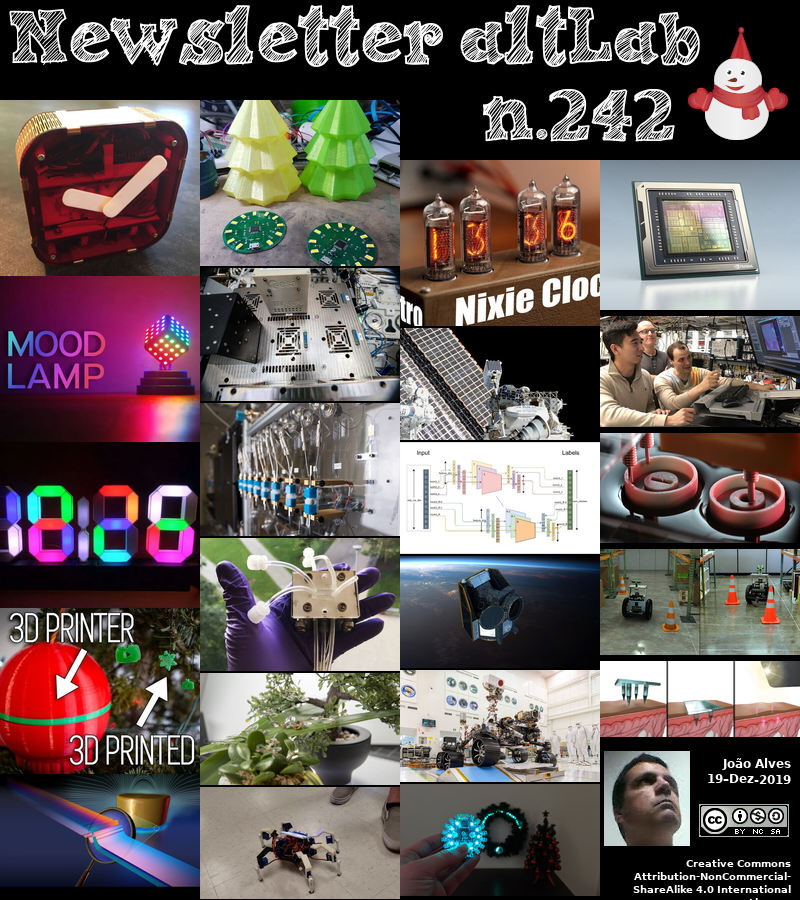2019-12-19 - Nº 242
Editorial
Esta é a Newsletter Nº 242 que se apresenta com o mesmo formato que as anteriores. Se gostar da Newsletter partilhe-a!
Todas as Newsletters encontram-se indexadas no link.
Esta Newsletter tem os seguintes tópicos:
Faz hoje anos que nascia, em 1813, Thomas Andrews. Este físico irlandês demonstrou a continuidade dos estados gasoso e líquido, durante o qual, durante as mudanças entre os dois estados, as propriedades físicas não apresentam mudanças bruscas. Ele descobriu a temperatura crítica do dióxido de carbono (1861), acima da qual o gás não pode ser liquefeito apenas pela pressão. Ele escreveu: Ainda podemos viver para ver ... corpos como oxigénio e hidrogénio no líquido, talvez até no estado sólido. Ele mediu com precisão calores de neutralização, formação e reacção; e calor latente de evaporação. Andrews foi o primeiro a usar um "calorímetro de bomba" - um recipiente metálico forte e selado para medir o calor da combustão. Ele estudou o ozono e provou que é um alótropo - ou forma alterada - de oxigénio.
Faz também anos hoje que nascia, em 1852, Albert A. Michelson. Este físico alemão-americano mediu com precisão a velocidade da luz e recebeu o Prémio Nobel da Física de 1907 "pelos seus instrumentos ópticos de precisão e pelas investigações espectroscópicas e metrológicas" que ele realizou com eles. Ele projectou o interferômetro Michelson altamente preciso e o usou para estabelecer a velocidade da luz como uma constante fundamental. Com Edward Morley, ele também o usou na tentativa de medir a velocidade da Terra através do éter (1887). A experiência produziu resultados nulos que levaram Einstein à sua teoria da relatividade. Ele mediu a barra padrão em Paris como 1.553.163,5 comprimentos de onda da linha vermelha de cádmio (1892-3).
Por fim, faz anos hoje que nascia, em 1943, William DeVries. Este cirurgião cardíaco americano fez o primeiro implante humano de um coração artificial permanente, o Jarvik-7, num paciente cardíaco terminal, Barney Clark, 61 anos, a 2 de Dezembro de 1982, na Universidade de Utah, Salt Lake City. Ele sobreviveu durante 112 dias, mas nunca foi forte o suficiente para deixar o hospital. O dispositivo, inventado por Robert K. Jarvik, bombeava sangue através de tubos alimentados por um compressor externo. Foram feitas mais quatro tentativas de implantes permanentes, mas depois abandonadas, pois os problemas técnicos do Jarvik-7 continuavam sem solução. O segundo, e maior sobrevivente, foi William J. Schroeder, que recebeu um Jarvik-7 em 25 de Novembro de 1984 no Humana Hospital Audubon em Louisville, Kentucky. Ele viveu 620 dias, morrendo em Agosto de 1986 aos 54 anos.
Nesta semana que passou o Rover 2020 da NASA completou o seu primeiro teste. Uma avaliação preliminar das suas actividades a 17 de Dezembro, permitiu constatar que o veículo espacial validou todas as caixas necessárias enquanto se deslocava para frente e para trás e fazia piruetas numa sala limpa no Laboratório de Propulsão a Jato da NASA em Pasadena, Califórnia. A próxima vez que o veículo espacial Mars 2020 conduzir, estará a fazê-lo em solo marciano.
E nesta semana que passou foi também anunciada uma parceria entre a Apple, a Amazon, a Google e a Zigbee para formar um grupo de trabalho para desenvolver um padrão aberto para dispositivos domésticos inteligentes. A iniciativa designada por "Project Connected Home over IP" visa desenvolver um padrão aberto que aumentará a compatibilidade de produtos domésticos inteligentes em várias plataformas, com segurança e privacidade como princípios fundamentais do seu desenho. O novo padrão tornará mais simples para as equipas de desenvolvimento a construção de dispositivos compatíveis com serviços domésticos inteligentes e assistentes de voz, garantindo que os consumidores possam escolher facilmente produtos domésticos inteligentes que funcionem perfeitamente juntos.
Também esta semana a fundação Raspberry PI anunciou um novo marco de 30 milhões de Raspberry PI produzidos desde 2012. Considerando que o co-fundador da Raspberry Pi Foundation, Ebert Upton, tinha expectativas muito mais modestas desde o início, prevendo vendas de apenas 10.000 unidades trata-se de uma marca de relevo. O Raspberry Pi gerou toda uma indústria de placas e, enquanto alguns superam o Raspberry Pi em especificações, nenhum deles o desafia seriamente no preço. Além disso, o Raspberry Pi possui o maior ecossistema de placas de hardware e suporte de software do sector apenas comparado ao Arduino, ainda que noutro segmento.
Na Newsletter desta semana apresentamos diversos projetos de maker. São apresentadas as revistas newelectronics de 10 de Dezembro, a MagPI nº89 e a Hackspace Magazine nº26 de Janeiro de 2020, é também apresentado o livro "The Essential Guide to Electronics in Shenzhen".
E esta é a ultima Newsletter antes do Natal e nesse sentido, em meu nome e em nome do altLab gostaria de desejar a todos votos de Boas Festas e de Feliz Natal.
 João Alves ([email protected])
João Alves ([email protected])
O conteúdo da Newsletter encontra-se sob a licença  Creative Commons Attribution-NonCommercial-ShareAlike 4.0 International License.
Creative Commons Attribution-NonCommercial-ShareAlike 4.0 International License.
Novidades da Semana
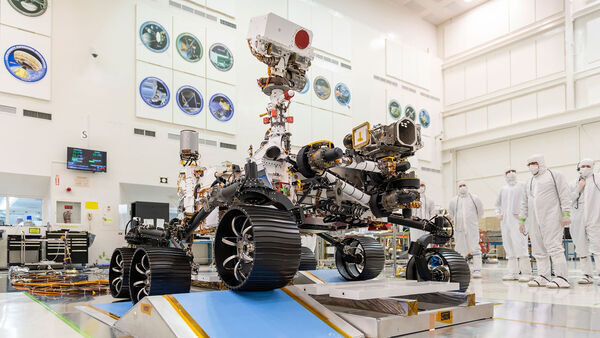
NASA's Mars 2020 Rover Completes Its First Drive
"NASA's next Mars rover has passed its first driving test. A preliminary assessment of its activities on Dec. 17, 2019, found that the rover checked all the necessary boxes as it rolled forward and backward and pirouetted in a clean room at NASA's Jet Propulsion Laboratory in Pasadena, California. The next time the Mars 2020 rover drives, it will be rolling over Martian soil. "Mars 2020 has earned its driver's license," said Rich Rieber, the lead mobility systems engineer for Mars 2020. "The test unambiguously proved that the rover can operate under its own weight and demonstrated many of the autonomous-navigation functions for the first time. This is a major milestone for Mars 2020."" [...]

What’s New in HomeKit
"Apple joins Amazon, Google, Zigbee Alliance and board members, to form working group to develop an open standard for smart home devices. Apple is taking a major step in its approach to the smart home by joining a new industry effort, Project Connected Home over IP. This initiative aims to develop an open standard that will increase the compatibility of smart home products across multiple platforms, with security and privacy as fundamental design tenets. The new standard will make it even simpler for developers to build one device that is compatible with smart home services and voice assistants, while ensuring consumers can easily choose smart home products that seamlessly work together. To accelerate the development of the new universal standard, Apple is open-sourcing portions of its HomeKit Accessory Development Kit (ADK). HomeKit has grown to become the most extensive, powerful and secure smart home platform available on more than a billion iOS and iPadOS devices." [...]
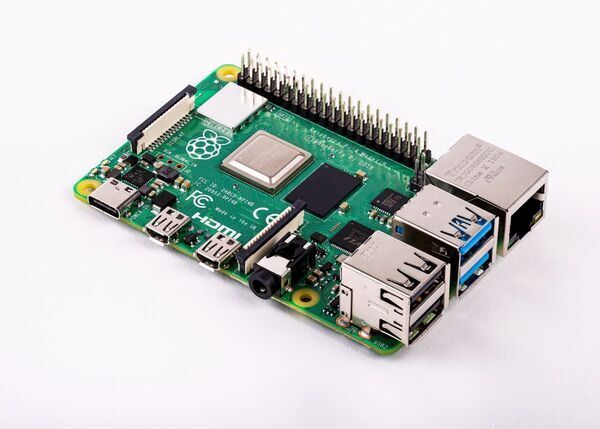
Raspberry Pi has now sold 30 million tiny single-board computers
"Developers and makers around the world have snapped up 30 million units of the Raspberry Pi since the diminutive British-designed computer began selling in February 2012. Raspberry Pi Foundation co-founder Ebert Upton had far more modest expectations at the outset, predicting sales of just 10,000 units. But the $35 mini computer — which has grown through four generations and branched out to the smaller form factor Raspberry Pi Zero — has turned into a permanent fixture on the DIY tech scene. Oracle earlier this year hailed its cluster of 1,060 Raspberry Pi boards the 'world's largest' Pi supercomputer, sporting 4,240 cores. NASA Jet Propulsion Laboratory (JPL) also uses the boards for its Mars mission. Others have used it as the guts of a synthesizer, and to build everything from DIY tablets, smartphones, smart-home tech and private clouds." [...]
Outras Notícias

World Wide Web Consortium (W3C) brings a new language to the Web as WebAssembly becomes a W3C Recommendation
"Following HTML, CSS and JavaScript, WebAssembly becomes the fourth language for the Web which allows code to run in the browser The World Wide Web Consortium (W3C) announced today that the WebAssembly Core Specification is now an official web standard, launching a powerful new language for the Web. WebAssembly is a safe, portable, low-level format designed for efficient execution and compact representation of code on modern processors including in a web browser. “The arrival of WebAssembly expands the range of applications that can be achieved by simply using Open Web Platform technologies. In a world where machine learning and Artificial Intelligence become more and more common, it is important to enable high performance applications on the Web, without compromising the safety of the users,” declared Philippe Le Hégaret, W3C Project Lead. High-performance applications relying on a low-level infrastructure At its core, WebAssembly is a virtual instruction set architecture that enables high-performance applications on the Web, and can be employed in many other environments. There are multiple implementations of WebAssembly, including browsers and stand-alone systems." [...]
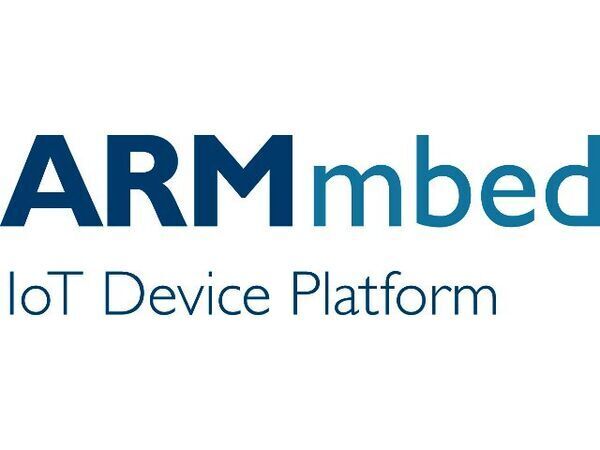
Mbed OS 5.15. released today
"We are pleased to announce the release of Mbed OS 5.15 today. One of our primary focus areas over the past three months has been updating the underlying compiler infrastructure that we support in order to benefit from the performance optimizations and language enhancements those compilers bring to the Mbed ecosystem. Further, work continues to improve our support for Python 3 and many of our basic tools have been updated to support this version. For Mbed itself, we have added support in a backward compatible way for “static pin map tables” to further reduce memory consumption in scenarios where runtime modification is not needed and not required. Tooling Update GCC Compiler 9 Support Earlier this year, in our 5.13 release, we updated two of the three compilers we supported, Arm Compiler 6 and IAR Embedded Workbench. In this release, we’ve updated our support for the GCC compiler, from version 6 to version 9." [...]
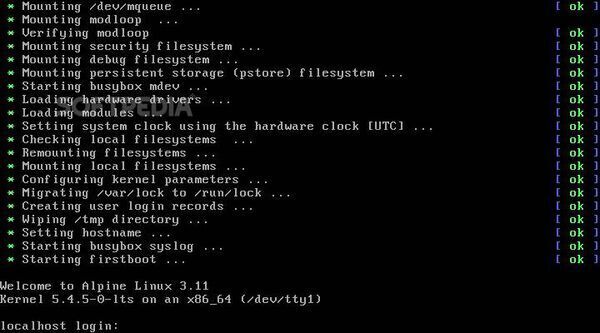
Alpine Linux 3.11 Released with Linux Kernel 5.4 and Raspberry Pi 4 Support
"Alpine Linux creator Natanael Copa announced today the availability of Alpine Linux 3.11.0, a major update that brings numerous new features, improvements, updated components, and lots of bug and security fixes. Shipping with the latest Linux 5.4 kernel series, the Alpine Linux 3.11.0 release is here to add support for Raspberry Pi Foundation's Raspberry Pi 4 Model B single-board computer, which can be installed using either the AArch64 (ARM 64-bit) and ARMv7 images. Alpine Linux 3.11.0 also adds initial support for the GNOME and KDE Plasma Desktop environments, which users can install from the main software repositories, support for the next-generation Vulkan graphics API, along with support for the DXVK Vulkan-based translation layer for Direct3D 9, 10, and 11. Among other changes included in this release, we can mention support for the MinGW-w64 free and open-source software development environment (GCC for Windows 64-bit and 32-bit), and Rust support for all architectures except s390x (IBM System z). Updated components Alpine Linux 3.11.0 also comes with numerous updated components like Busybox 1.31.1, Crystal 0.31.1, Erlang 22.1, GCC 9.2.0, Git 2.24.1, Go 1.13.4, LLVM 9.0.0, musl libc 1.1.24, Nextcloud 17.0.2, Perl 5.30.1, PostgreSQL 12.1, Python 3.8.0, QEMU 4.2.0, Rust 1.39.0, Zabbix 4.4.3, and Xen 4.13.0. Under the hood, this release removes linux-vanilla, as users are recommended to install linux-lts when upgrading from a previous release, and deprecates support for Python 2 packages, which will completely be removed in the next release." [...]
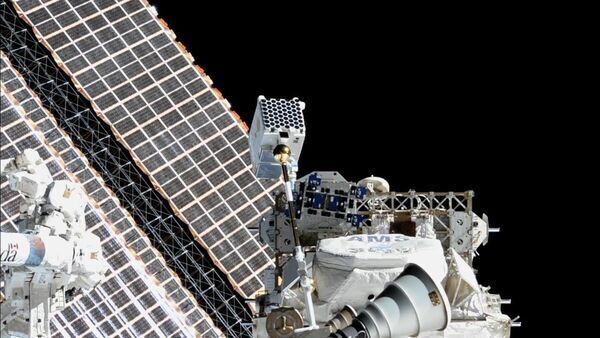
NASA’s NICER Delivers Best-ever Pulsar Measurements, 1st Surface Map
"Astrophysicists are redrawing the textbook image of pulsars, the dense, whirling remains of exploded stars, thanks to NASA’s Neutron star Interior Composition Explorer (NICER), an X-ray telescope aboard the International Space Station. Using NICER data, scientists have obtained the first precise and dependable measurements of both a pulsar’s size and its mass, as well as the first-ever map of hot spots on its surface. The pulsar in question, J0030+0451 (J0030 for short), lies in an isolated region of space 1,100 light-years away in the constellation Pisces. While measuring the pulsar's heft and proportions, NICER revealed that the shapes and locations of million-degree “hot spots” on the pulsar’s surface are much stranger than generally thought. “From its perch on the space station, NICER is revolutionizing our understanding of pulsars,” said Paul Hertz, astrophysics division director at NASA Headquarters in Washington. “Pulsars were discovered more than 50 years ago as beacons of stars that have collapsed into dense cores, behaving unlike anything we see on Earth." [...]

Intel Acquires Artificial Intelligence Chipmaker Habana Labs
"Combination Advances Intel’s AI Strategy, Strengthens Portfolio of AI Accelerators for the Data Center Intel Corporation today announced that it has acquired Habana Labs, an Israel-based developer of programmable deep learning accelerators for the data center for approximately $2 billion. The combination strengthens Intel’s artificial intelligence (AI) portfolio and accelerates its efforts in the nascent, fast-growing AI silicon market, which Intel expects to be greater than $25 billion by 20241. “This acquisition advances our AI strategy, which is to provide customers with solutions to fit every performance need – from the intelligent edge to the data center,” said Navin Shenoy, executive vice president and general manager of the Data Platforms Group at Intel. “More specifically, Habana turbo-charges our AI offerings for the data center with a high-performance training processor family and a standards-based programming environment to address evolving AI workloads.” More: Artificial Intelligence at Intel Intel’s AI strategy is grounded in the belief that harnessing the power of AI to improve business outcomes requires a broad mix of technology – hardware and software – and full ecosystem support. Today, Intel AI solutions are helping customers turn data into business value and driving meaningful revenue for the company. In 2019, Intel expects to generate over $3.5 billion in AI-driven revenue, up more than 20 percent year-over-year." [...]
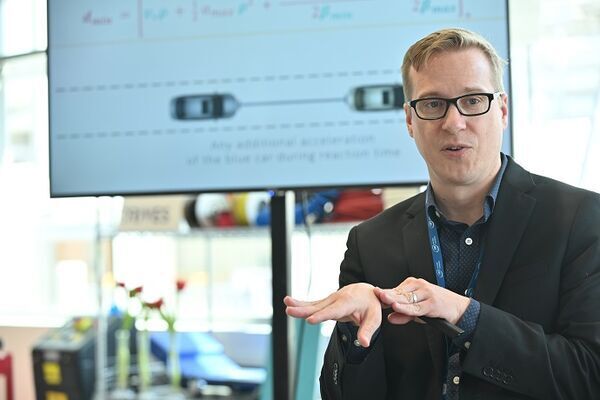
IEEE to Define a Formal Model for Safe Automated Vehicle Decision-Making
"The Institute of Electrical and Electronics Engineers (IEEE) has approved a proposal to develop a standard for safety considerations in automated vehicle (AV) decision-making and named Intel Senior Principal Engineer Jack Weast to lead the workgroup. Participation in the workgroup is open to companies across the AV industry, and Weast hopes for broad industry representation. Group members will hold their first meeting in 2020’s first quarter. “The forthcoming IEEE standard will provide a useful tool to answer the question of what it means for an AV to drive safely.” – Jack Weast, Intel senior principal engineer Why It Matters: Industry and regulators are struggling to agree on a method for evaluating the safety of AVs, although most people agree that standards are needed to establish regulatory thresholds for granting AVs their driver’s licenses. Multiple approaches are in development even though industry consensus is lacking. Meanwhile, technology development is not standing still and is nearly ready." [...]

Robotics Ramp-Up: NVIDIA Sets Milestone in Delivering Unified Platform for Building Autonomous Machines
"NVIDIA has released updated capabilities for robotics AI perception and simulation, with a new version of the NVIDIA Isaac software development kit. Announced by company founder and CEO Jensen Huang at NVIDIA’s latest GPU Technology Conference, the SDK achieves an important milestone in establishing a unified robotic development platform — enabling AI, simulation and manipulation capabilities. It includes the Isaac Robotics Engine (which provides the application framework), Isaac GEMs (pre-built deep neural networks models, algorithms, libraries, drivers and APIs), reference apps for indoor logistics, as well as the first release of Isaac Sim (offering navigation capabilities). As a result, the new Isaac SDK can greatly accelerate developing and testing robots for researchers, developers, startups and manufacturers. It enables the AI-powered perception and training of robots in simulation — allowing them to be tested and validated in a range of environments and situations. And in doing so, it saves costs." [...]

NVIDIA Introduces DRIVE AGX Orin — Advanced, Software-Defined Platform for Autonomous Machines
"NVIDIA today introduced NVIDIA DRIVE AGX Orin™, a highly advanced software-defined platform for autonomous vehicles and robots. The platform is powered by a new system-on-a-chip (SoC) called Orin, which consists of 17 billion transistors and is the result of four years of R&D investment. The Orin SoC integrates NVIDIA’s next-generation GPU architecture and Arm Hercules CPU cores, as well as new deep learning and computer vision accelerators that, in aggregate, deliver 200 trillion operations per second—nearly 7x the performance of NVIDIA’s previous generation Xavier SoC. Orin is designed to handle the large number of applications and deep neural networks that run simultaneously in autonomous vehicles and robots, while achieving systematic safety standards such as ISO 26262 ASIL-D. Built as a software-defined platform, DRIVE AGX Orin is developed to enable architecturally compatible platforms that scale from a Level 2 to full self-driving Level 5 vehicle, enabling OEMs to develop large-scale and complex families of software products. Since both Orin and Xavier are programmable through open CUDA and TensorRT APIs and libraries, developers can leverage their investments across multiple product generations." [...]
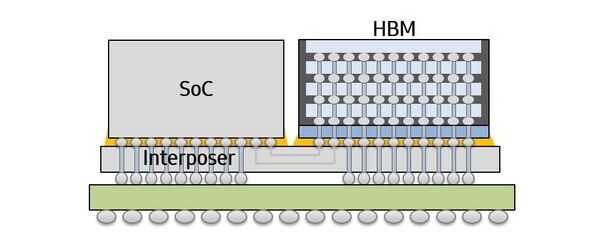
Baidu and Samsung Electronics Ready for Production of Leading-Edge AI Chip for Early Next Year
"Designed based on Samsung’s 14nm process and I-Cube TM package technology, Baidu KUNLUN chip to expand AI ecosystem and transform the user experience Baidu, a leading Chinese-language Internet search provider, and Samsung Electronics, a world leader in advanced semiconductor technology, today announced that Baidu’s first cloud-to-edge AI accelerator, Baidu KUNLUN, has completed its development and will be mass-produced early next year. Baidu KUNLUN chip is built on the company’s advanced XPU, a home-grown neural processor architecture for cloud, edge, and AI, as well as Samsung’s 14-nanometer (nm) process technology with its I-Cube™ (Interposer-Cube) package solution. The chip offers 512 gigabytes per second (GBps) memory bandwidth and supplies up to 260 Tera operations per second (TOPS) at 150 watts. In addition, the new chip allows Ernie, a pre-training model for natural language processing, to infer three times faster than the conventional GPU/FPGA-accelerating model. Leveraging the chip’s limit-pushing computing power and power efficiency, Baidu can effectively support a wide variety of functions including large-scale AI workloads, such as search ranking, speech recognition, image processing, natural language processing, autonomous driving, and deep learning platforms like PaddlePaddle. Through the first foundry cooperation between the two companies, Baidu will provide advanced AI platforms for maximizing AI performance, and Samsung will expand its foundry business into high performance computing (HPC) chips that are designed for cloud and edge computing." [...]
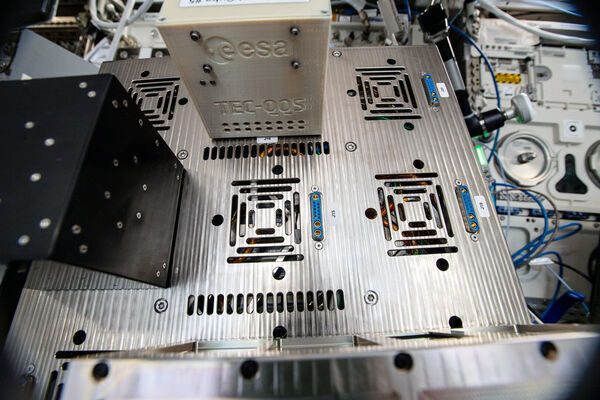
Cryptography ICE Cube experiment
"A compact experiment aimed at enhancing cybersecurity for future space missions is operational in Europe’s Columbus module of the International Space Station, running in part on a Raspberry Pi Zero computer costing just a few euros. “Our CryptIC experiment is testing technological solutions to make encryption-based secure communication feasible for even the smallest of space missions,” explains ESA software product assurance engineer Emmanuel Lesser. “This is commonplace on Earth, using for example symmetric encryption where both sides of the communication link share the same encryption key. “In orbit the problem has been that space radiation effects can compromise the key within computer memory causing ‘bit-flips’. This disrupts the communication, as the key on ground and the one in space no longer match. Up to now this had been a problem that requires dedicated – and expensive – rad-hardened devices to overcome.” Satellites in Earth orbit might be physically remote, but still potentially vulnerable to hacking." [...]
Ciência e Tecnologia
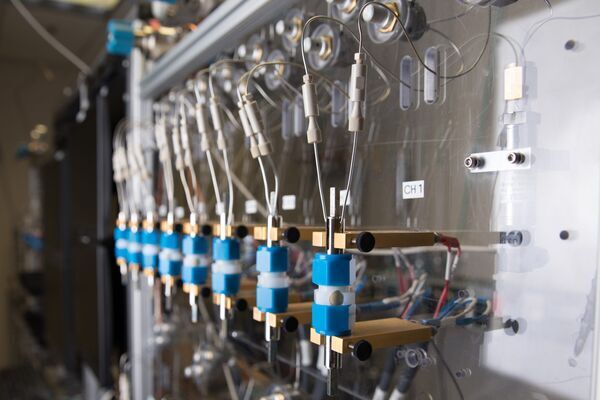
Free of Heavy Metals, New Battery Design Could Alleviate Environmental Concerns
"Today, IBM Research is building on a long history of materials science innovation to unveil a new battery discovery. This new research could help eliminate the need for heavy metals in battery production and transform the long-term sustainability of many elements of our energy infrastructure. As battery-powered alternatives for everything from vehicles to smart energy grids are explored, there remain significant concerns around the sustainability of available battery technologies. Many battery materials, including heavy metals such as nickel and cobalt, pose tremendous environmental and humanitarian risks. Cobalt in particular, which is largely available in central Africa, has come under fire for careless and exploitative extraction practices.1 Using three new and different proprietary materials, which have never before been recorded as being combined in a battery, our team at IBM Research has discovered a chemistry for a new battery which does not use heavy metals or other substances with sourcing concerns. The materials for this battery are able to be extracted from seawater, laying the groundwork for less invasive sourcing techniques than current material mining methods." [...]

A soft robotic insect that survives being flattened by a fly swatter
"Researchers at EPFL have developed an ultra-light robotic insect that uses its soft artificial muscles to move at 3 cm per second across different types of terrain. It can be folded or crushed and yet continue to move. Imagine swarms of robotic insects moving around us as they perform various tasks. It might sound like science fiction, but it’s actually more plausible than you might think. Researchers at EPFL’s School of Engineering have developed a soft robotic insect, propelled at 3 cm per second by artificial muscles. The team developed two versions of this soft robot, dubbed DEAnsect." [...]
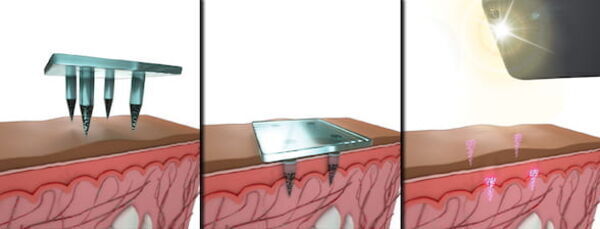
Quantum-dot tattoos hold vaccination record
"Rice bioengineer reveals dissolving microneedles that also embed fluorescent medical info Keeping track of a child’s shots could be so much easier with technology invented by a new Rice University professor and his colleagues. Kevin McHugh, an assistant professor of bioengineering at Rice since this summer, and a team at his previous institution, the Massachusetts Institute of Technology, report in a cover story in Science Translational Medicine on their development of quantum-dot tags that fluoresce with information after they’re injected as part of a vaccination. The tags are incorporated in only some of the array of sugar-based microneedles on a patch. When the needles dissolve in about two minutes, they deliver the vaccine and leave the pattern of tags just under the skin, where they become something like a bar-code tattoo. Instead of ink, this highly specific medical record consists of copper-based quantum dots embedded in biocompatible, micron-scale capsules. Their near-infrared dye is invisible, but the pattern they set can be read and interpreted by a customized smartphone." [...]

Chemists glimpse the fleeting “transition state” of a reaction
"New technique for observing reaction products offers insights into the chemical mechanisms that formed them. During a chemical reaction, the molecules involved in the reaction gain energy until they reach a “point of no return” known as a transition state. Until now, no one has glimpsed this state, as it lasts for only a few femtoseconds (quadrillionths of a second). However, chemists at MIT, Argonne National Laboratory, and several other institutions have now devised a technique that allows them to determine the structure of the transition state by detailed observation of the products that result from the reaction. “We’re looking at the consequences of the event, which have encoded in them the actual structure of the transition state,” says Robert Field, the Robert T. Haslam and Bradley Dewey Professor of Chemistry at MIT. “It’s an indirect measurement, but it’s among the most direct classes of measurement that have been possible.” Field and his colleagues used millimeter-wave spectroscopy, which can measure the rotational-vibrational energy of reaction product molecules, to determine the structure of the products of the breakdown of vinyl cyanide caused by ultraviolet light." [...]
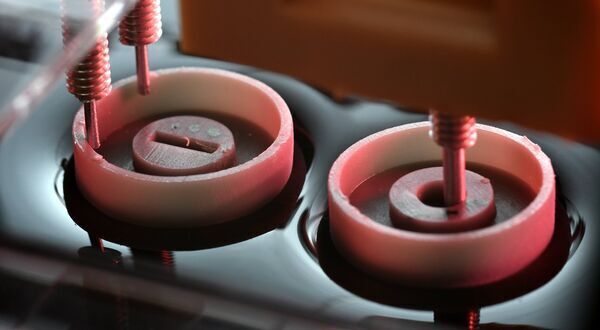
Researchers directly measure ‘Cheerios effect’ forces for the first time
"In a finding that could be useful in designing small aquatic robots, researchers have measured the forces that cause small objects to cluster together on the surface of a liquid — a phenomenon known as the “Cheerios effect.” There’s an interesting fluid dynamics phenomenon that happens every morning in millions of cereal bowls. When there are just a few bits of cereal left floating on top of the milk, they tend to cluster together in the middle or around the edges of the bowl, rather than dispersing across the surface. Now a team of Brown University researchers has developed a way to measure the forces involved in this type of clustering. It’s the first time, the researchers say, that these forces have been experimentally measured in objects at the millimeter/centimeter scale. And the implications of the work go far beyond cereal bowls — the results could be useful in guiding the self-assembly of micromachines or in designing microscale robots that operate in and around water. “There have been a lot of models describing this Cheerios effect, but it’s all been theoretical,” said Ian Ho, an undergraduate student at Brown and lead author of a paper describing the work." [...]
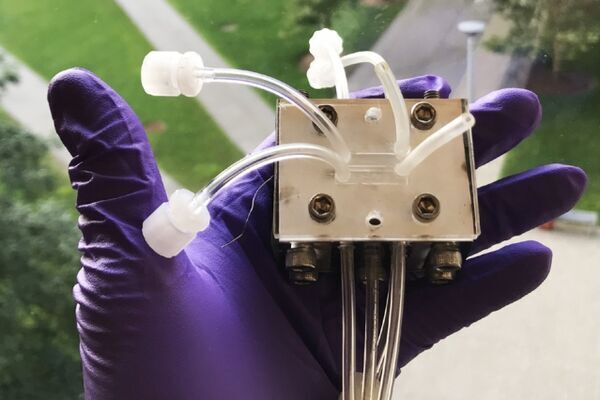
A new way to remove contaminants from nuclear wastewater
"Method concentrates radionuclides in a small portion of a nuclear plant’s wastewater, allowing the rest to be recycled. Nuclear power continues to expand globally, propelled, in part, by the fact that it produces few greenhouse gas emissions while providing steady power output. But along with that expansion comes an increased need for dealing with the large volumes of water used for cooling these plants, which becomes contaminated with radioactive isotopes that require special long-term disposal. Now, a method developed at MIT provides a way of substantially reducing the volume of contaminated water that needs to be disposed of, instead concentrating the contaminants and allowing the rest of the water to be recycled through the plant’s cooling system. The proposed system is described in the journal Environmental Science and Technology, in a paper by graduate student Mohammad Alkhadra, professor of chemical engineering Martin Bazant, and three others. The method makes use of a process called shock electrodialysis, which uses an electric field to generate a deionization shockwave in the water." [...]

A Swiss satellite seeking out distant planets
"The CHEOPS satellite was put into orbit on Wednesday, a day later than planned, from the European spaceport in Kourou, French Guiana. The telescope, which will hunt for new exoplanets, is the result of six years of collaboration between the University of Bern and the University of Geneva, with the assistance of EPFL’s Space Center. Mission accomplished! The CHEOPS satellite, named for “CHaracterizing ExOPlanet Satellite,” successfully blasted off into space on Wednesday after a technical fault with the carrier rocket pushed the launch back by 24 hours. The satellite, which will search for planets orbiting around distant stars, is now flying along its planned path, some 700 km above the Earth’s surface. CHEOPS is the culmination of six years of work, much of which was carried out at the University of Bern and University of Geneva, in collaboration with researchers from EPFL’s Space Center (eSpace) and with support from the European Space Agency (ESA)." [...]

Cheers! Maxwell’s electromagnetism extended to smaller scales
"More than one hundred and fifty years have passed since the publication of James Clerk Maxwell’s “A Dynamical Theory of the Electromagnetic Field” (1865). What would our lives be without this publication? It is difficult to imagine, as this treatise revolutionized our fundamental understanding of electric fields, magnetic fields, and light. The twenty original equations (nowadays elegantly reduced into four), their boundary conditions at interfaces, and the bulk electronic response functions (dielectric permittivity ε and magnetic permeability µ) are at the root of our ability to manipulate electromagnetic fields and light (see Table (here without external interface currents or charges)). Therefore, wondering what our life would be without Maxwell’s equations means to try to envision our life without most of current science, communications and technology. On large (macro) scales, bulk response functions and the classical boundary conditions are sufficient for describing the electromagnetic response of materials, but as we consider phenomena on smaller scales, nonclassical effects become important." [...]

In surprise breakthrough, scientists create quantum states in everyday electronics
"UChicago team discovers innovative way to tune quantum signals After decades of miniaturization, the electronic components we’ve relied on for computers and modern technologies are now starting to reach fundamental limits. Faced with this challenge, engineers and scientists around the world are turning toward a radically new paradigm: quantum information technologies. Quantum technology, which harnesses the strange rules that govern particles at the atomic level, is normally thought of as much too delicate to coexist with the electronics we use every day in phones, laptops and cars. However, scientists with the University of Chicago’s Pritzker School of Molecular Engineering announced a significant breakthrough: Quantum states can be integrated and controlled in commonly used electronic devices made from silicon carbide. “The ability to create and control high-performance quantum bits in commercial electronics was a surprise,” said lead investigator David Awschalom, the Liew Family Professor in Molecular Engineering at UChicago and a pioneer in quantum technology. “These discoveries have changed the way we think about developing quantum technologies—perhaps we can find a way to use today’s electronics to build quantum devices.” In two papers published in Science and Science Advances, Awschalom’s group demonstrated they could electrically control quantum states embedded in silicon carbide." [...]
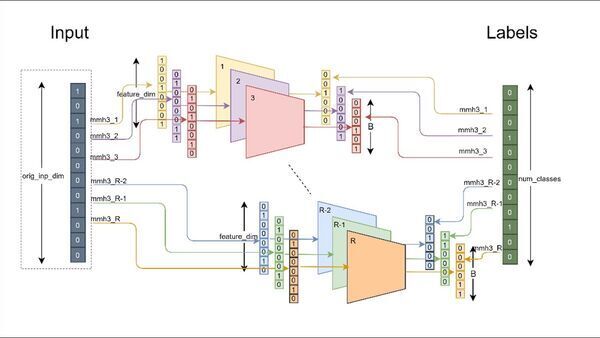
Rice, Amazon report breakthrough in ‘distributed deep learning’
"Rice, Amazon report breakthrough in ‘distributed deep learning’ MACH slashes time and resources needed to train computers for product searches Online shoppers typically string together a few words to search for the product they want, but in a world with millions of products and shoppers, the task of matching those unspecific words to the right product is one of the biggest challenges in information retrieval. Using a divide-and-conquer approach that leverages the power of compressed sensing, computer scientists from Rice University and Amazon have shown they can slash the amount of time and computational resources it takes to train computers for product search and similar “extreme classification problems” like speech translation and answering general questions. The research will be presented this week at the 2019 Conference on Neural Information Processing Systems (NeurIPS 2019) in Vancouver. The results include tests performed in 2018 when lead researcher Anshumali Shrivastava and lead author Tharun Medini, both of Rice, were visiting Amazon Search in Palo Alto, California. In tests on an Amazon search dataset that included some 70 million queries and more than 49 million products, Shrivastava, Medini and colleagues showed their approach of using “merged-average classifiers via hashing,” (MACH) required a fraction of the training resources of some state-of-the-art commercial systems. “Our training times are about 7-10 times faster, and our memory footprints are 2-4 times smaller than the best baseline performances of previously reported large-scale, distributed deep-learning systems,” said Shrivastava, an assistant professor of computer science at Rice." [...]
Documentação
A documentação é parte essencial do processo de aprendizagem e a Internet além de artigos interessantes de explorar também tem alguma documentação em formato PDF interessante de ler. Todos os links aqui apresentados são para conteúdo disponibilizado livremente pelo editor do livro.
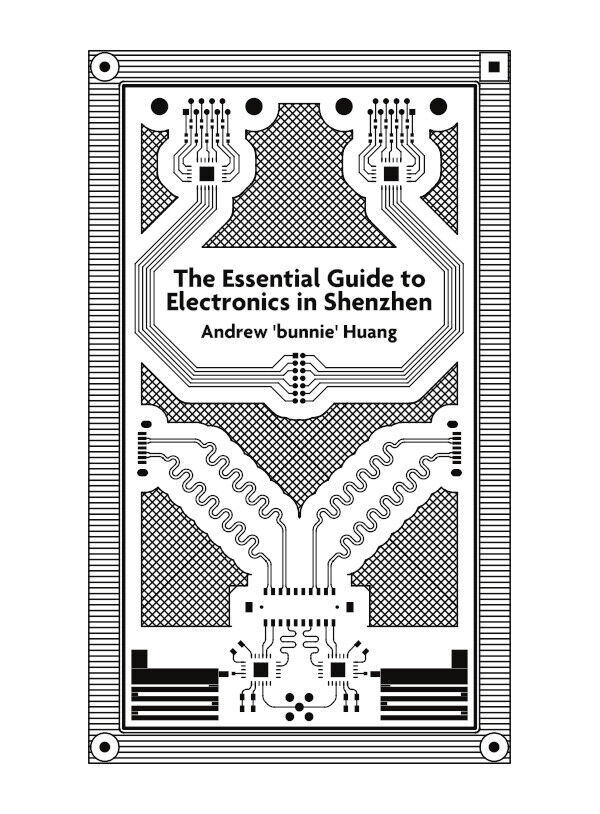
The Essential Guide to Electronics in Shenzhen
"Hello! This book is designed to help non-Mandarin speakers navigate the sprawling electronics markets of Shenzhen.The markets are locally referred to as the Hua Qiang Bei (HQB) markets, after the road that runs through the heart of the market. The concept behind this book is to provide a “point-totranslate” interaction that is structured according to a typical transaction in the market: 1. Specifying components 2. Specifying quantity and packaging 3. Payment and delivery 4." [...]
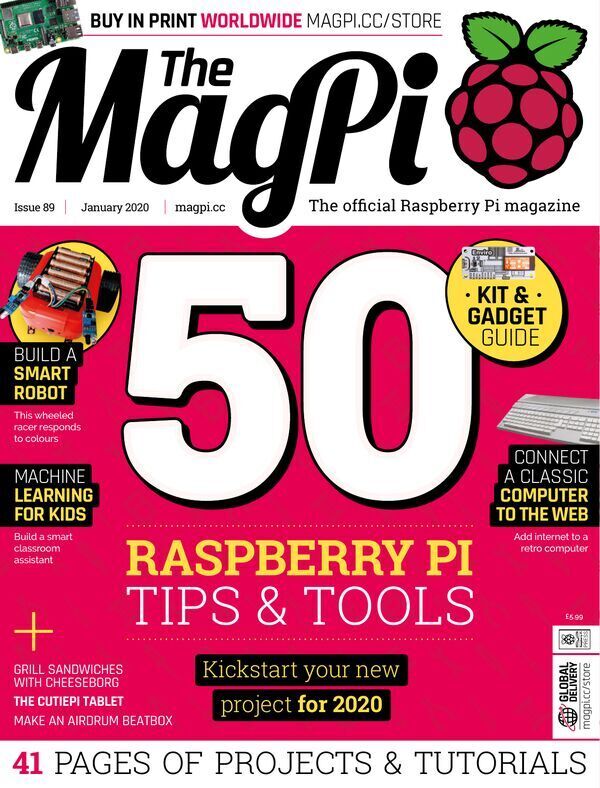
The MagPI 89
"Discover the best Raspberry Pi tips, tools, kits and gadgets in the latest edition of The MagPi magazine. All this inside The MagPi magazine issue #89… 50 Raspberry Pi Tips & Tools. Beef up your maker skills in 2020 with our guide to all the tools you need. From soldering kits to 3D printers; this feature has everything you need to prototype and build incredible projects. Raspberry Pi kit & gadget guide. Discover the best cases, keyboards, speakers, starter kits, games accessories and robots." [...]
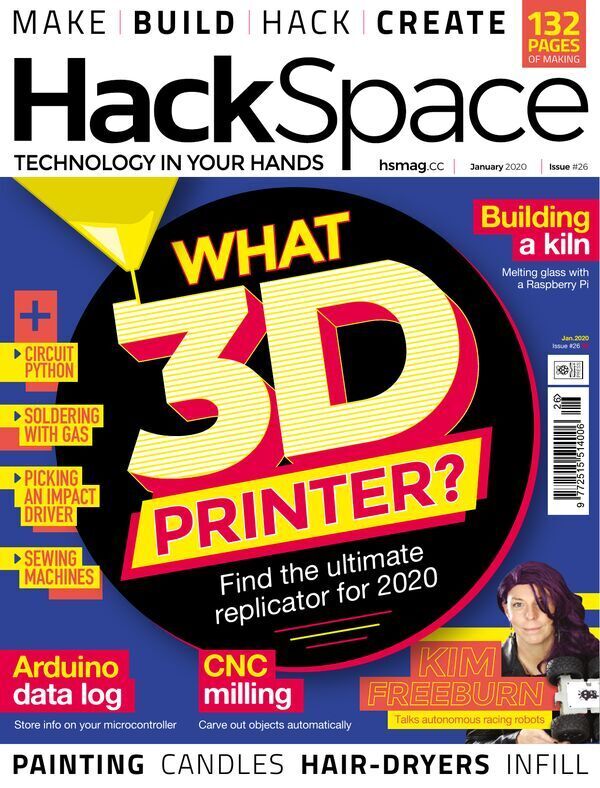
HackSpace magazine #26
"What’s the best 3D printer? We asked real users about their experiences with their own printers, and here are the results. Find your perfect 3D printer with out guide. Create your own clothes with a sewing machine Discover a USB power supply Add OctoPrint to your 3D printer Build a video baby monitor" [...]
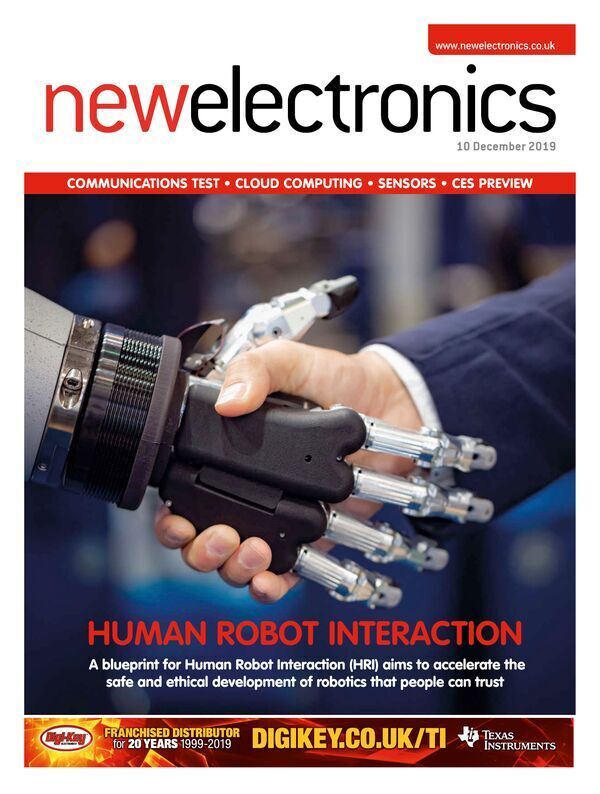
newelectronics 10 Dezembro 2019
"New Electronics is a fortnightly magazine focusing on technological innovation, news and the latest developments in the electronics sector. Downloadable as a digital page turner or pdf file, or offered as a hard copy, the New Electronics magazine is available in a format to suit you. " [...]
Projetos Maker
Diversos Projetos interessantes.
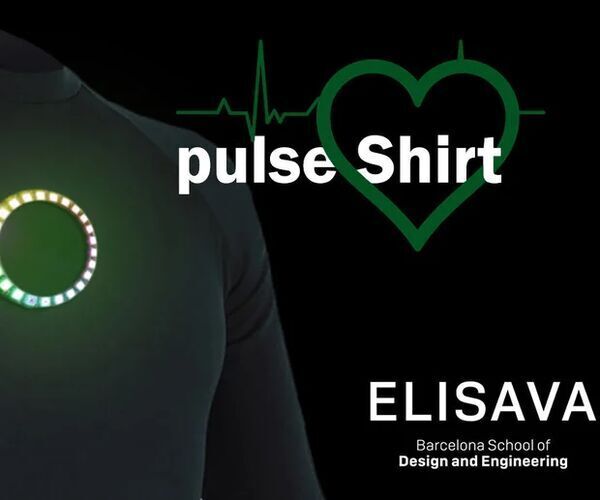
Pulse Shirt - LED - Arduino NANO
"This project has been carried out by three students of the Degree in Industrial Design of ELISAVA, in the subject of Academic Uses in specific terminology in English I. It has been called Pulse Shirt - Led - Lilypad , consists of a smart shirt that measures heart rate, through a Heart Rate Monitor it can measure the heart rate of the person who wears the shirt. Also it has a light circle that changes the color with your pulse. Users to wear this shirt: - Professional athlete who wants to monitor your heart rate. - Person with cardiovascular problems. To indicate the high pulsations, the shirt incorporates vibrators located around the shirt that notice an increase in heart rate." [...]
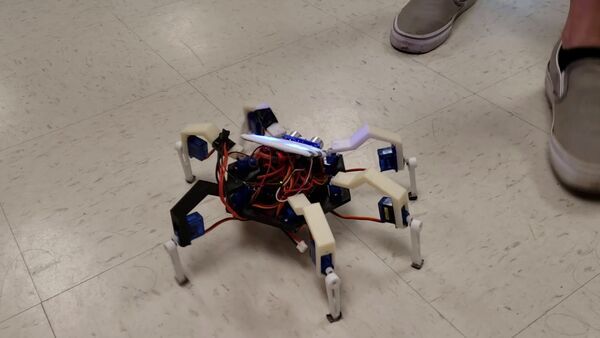
Hexapod Robot
"We’ve designed an obstacle-avoiding, mood-displaying hexapod robot. This robot utilizes 12 servo-powered joints to walk on six legs in a spider-like fashion. During its normal walking pattern, Hexapod avoids obstacles in the forward direction via an ultrasonic sensor calibrated to detect objects 20” away. To mimic spider walking patterns, we programmed Hexapod to back up in a randomly decided left or right direction in the presence of an obstacle. Finally, to include the ability to communicate the state of obstacle detection with a user, Hexapod includes an 8x8 LED display to create a mood-dependent face that increases in happiness with the time elapsed since an obstacle was last detected. " [...]

Christmas Ornament That 3D Prints Christmas Ornaments
"Every year I try to one up myself on how crazy of a Christmas ornament I can create. Last year it was a Christmas ornament that could play 90s christmas commercials. This year I had a crazy idea, what if I could build a Christmas ornament that could 3D print smaller Christmas ornaments. I had two weeks to design, print, build, and get it working! It actually prints! Amazing." [...]
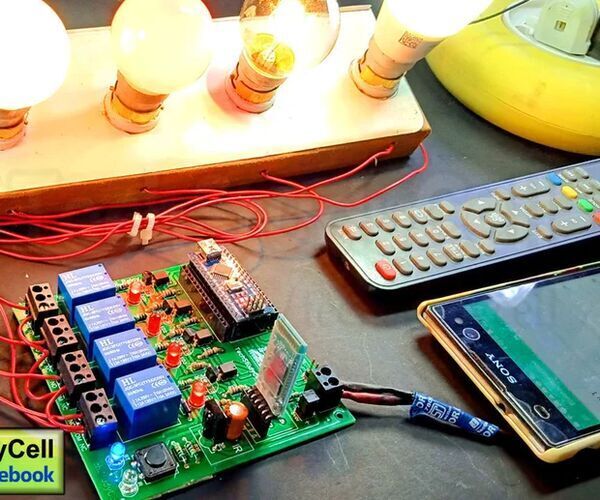
Home Automation With Infrared and Bluetooth Controlled Relay Module
"In this home automation project, I have shown how we can control light, fan and other home appliances from our smartphone app and IR remote using the Arduino control relay module circuit. This Arduino controlled Smart relay circuit has two modes, Infrared mode and Bluetooth mode so we can control room lights, fan with Mobile Bluetooth and IR remote. " [...]
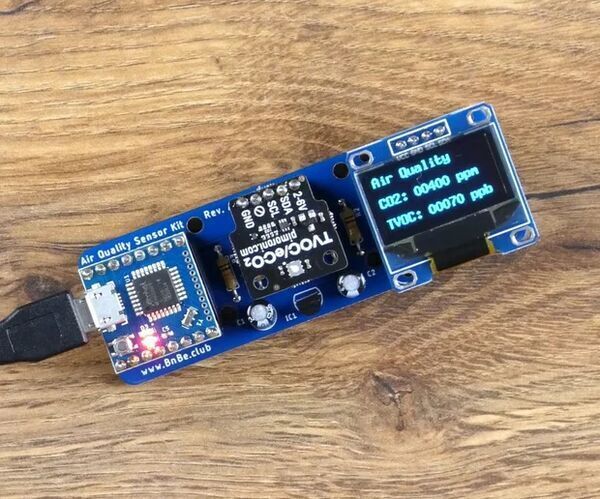
Air Quality Sensor Using an Arduino
"In this post, we will learn how to build a simple yet useful air quality sensor. We will use the SGP30 sensor along with the Piksey Pico, though the sketch will work with pretty much any Arduino compatible board. The video above talks you through the importance of such a sensor. We also discuss several factors that were considered when selecting the components for this project. I recommend watching it to get an overview of everything, particularly if you will be using the PCB that has been designed for this project. " [...]
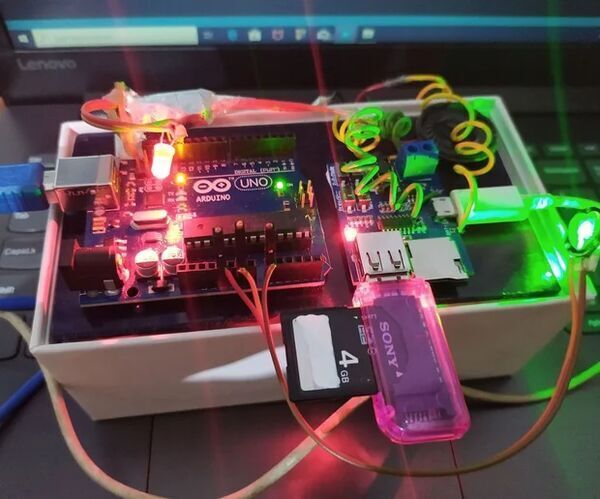
Automatic Stress Detector and Reducer Device
"Stress reducer device is a such type of device that will not only automatically detect your stress but also reduce it. Whenever a person suffers from stress than their heart beat rate increases. So in this device im using heart beat rate sensor that will detect the heart beat rate of a person and when heart beat rate of a person goes above the normal level then the circuit activates and start producing alpha waves. Alpha wave is a brainwave that allows a person to feel good and this alpha wave stops when person is in stress. So this device will produce artificially alpha waves to make the person feel good, happy and out of stress. This alpha waves will last for fifteen minutes and after that itll stops producing alpha waves but the stress detection will be still on and if persons stress not reduced or his heart beat is still high then itll again starts producing alpha waves." [...]

LED Mood Lamp
"I recently came across an LED Cube by Greg Davill. It's a great piece of artwork. Getting inspired by it, even I wanted to make something like that. But this one was way out of my league. I decided to take one step at a time and made a way smaller version of LED Cube as a Mood Lamp. It can be a good starting point to learn about the hardware, which are mostly LEDs and microcontrollers, and software to control them (creating animations)." [...]
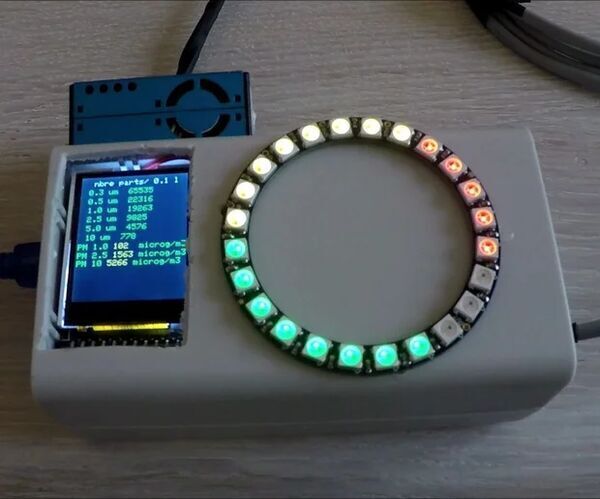
System for Monitoring Air Quality for Particulates Pollution
"INTRO : 1 In this project I show how to build a particle detector with data display, data backup on SD card and IOT. Visually a neopixels ring display indicates the air quality. 2 Air quality is an increasingly important concern today. there are systems to measure the dust rate but they are very expensive. There are low-cost, high-quality particle detectors on the market, as shown by some studies. for example : https://www.atmos-meas-tech.net/11/4823/2018/amt-1... 3 I therefore decided to build a device capable of measuring the number of particles by size classes (0.5µm to 10 µm), visually with a simple display of the result (neo pixel ring), a more detailed display on a TFT screen and a time-stamped backup on an SD card." [...]
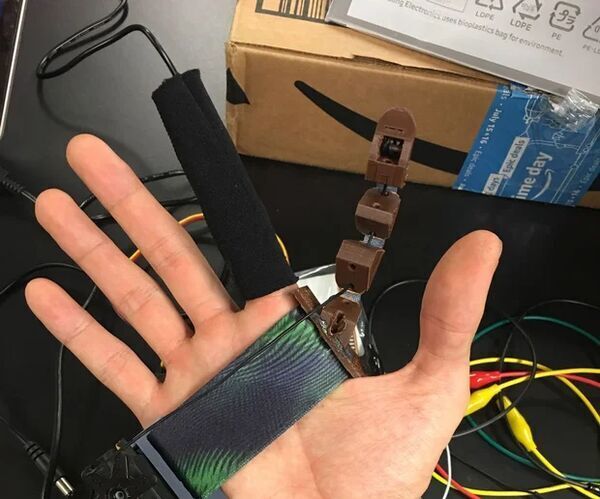
The Sixth Finger
"The project is based on circuit playground express and cricket. The concept is to reimagine what will happen if people have one more finger? Will our life become easier or will it cause troubles? The deliverable is a 3d printed finger which is controlled by a servo and the servo will be activated by flex sensor. The idea is inspired by different technologies for disabilities and the devices soldiers can put on in sci-fi movies. In those movies, such as Edge of Tomorrow and Elysium, People like soldiers wear these devices, which can work perfectly with human body motion." [...]

Blinking Brake Light
"Supplies: (1) Brake Light (28) Red LED Diodes (7) 180 ohm 1/8w Resistors (1) Prototyping board (1) Arduino Nano (1) spools of wire (1) 8 pin waterproof connector optional (2) Male/female spade connectors" [...]
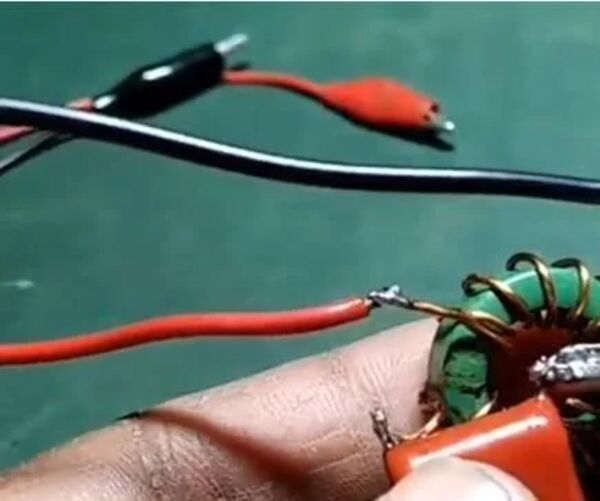
Audio Amplifier With Single Transistor 2N3055
"This Audio amplifier consists of the single transistor (2N3005) and a simple amplifier circuit consists of simple electrical components like resistors, capacitors etc. The circuit of this amplifier is quite simple because it has the minimum number of components. Component List 2N3055 1pc CFR02SJ0681A10 1pc 1000uF 16V 1pc Capacitor (CBB22) 1pc Battery 6Volts 1pc A2541HWR-2P 3pcs" [...]
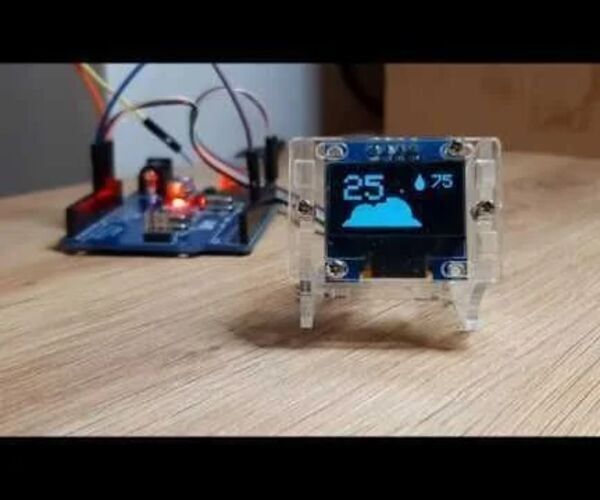
Simple DIY Weather Station With DHT11 and OLED Display
"In this tutorial we will learn how to create a simple weather station using Arduino, DHT11 sensor, OLED Display and Visuino to Display the Temperature and Humidity. " [...]
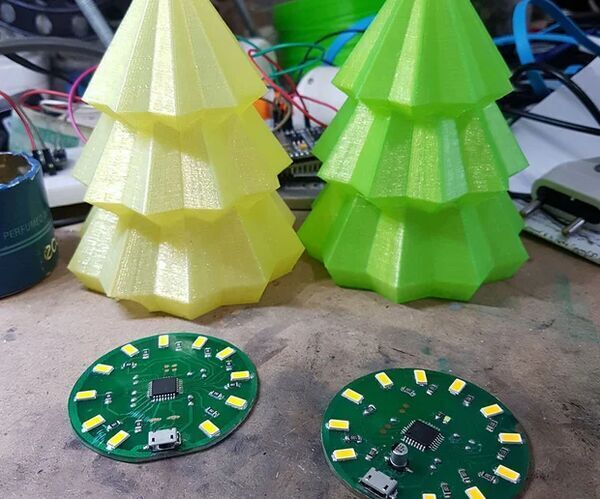
Christmas Tree ATmega (arduino)
"Christmas Tree ATmega (arduino) Supplies: 1x atmega (328-168-88-48-8) smd now im use atmega48 11x Led 5630 smd 11x resistor 20 ohm (size 1206) smd 1x Micro USB Female 1x pcb 1x capacitor 16v 10uf smd 3d printer one arduino uno or nano or ... (have com port usb) hot air soldering solder paste uv light for color pcb (Blue UV SOLDEER PCB)" [...]

Make Your Own Retro Nixie Clock With an RTC!
"In this project I will show you how to create a retro nixie clock. That means I will show you how you can control nixie tubes with a high voltage DC power supply and then I will combine 4 nixie tubes with an Arduino, a Real Time Clock (RTC) and a custom 3D printed enclosure in order to create the nixie clock. Let's get started! " [...]

7 Segment Clock
"After several year of using, my analog clock if definitively dead. Meanwhile i was looking for a 3d clock project to print with my Prusa, so i found a 7 segment clock to be driven by ws2812 leds and Arduino. I thought that the power of that leds is to show a large range of colours then the question was, how to combine multiple colours on a digital clock? Then the idea to customize the clock with the following features: - 7 different minute change transitions - 3 pre-setted colors for time slots - ambient light intensity auto dim - auto shutdown/start when there is no need to show time - auto daylight saving time adjustment Supplies: The project can be executed using a 3D printer or googling for projects of 7 segment clocks. Someone made them with cardboard also. There's also need of: Arduino nano photo chell momentary pushbutton on/off switch DC plug 5V transformer n°30 WS2812 leds (model 30 leds/meter) pcb DS3231 module thin cables for leds connections resistors 10K, 550 solder glue jumpers headers male/female" [...]
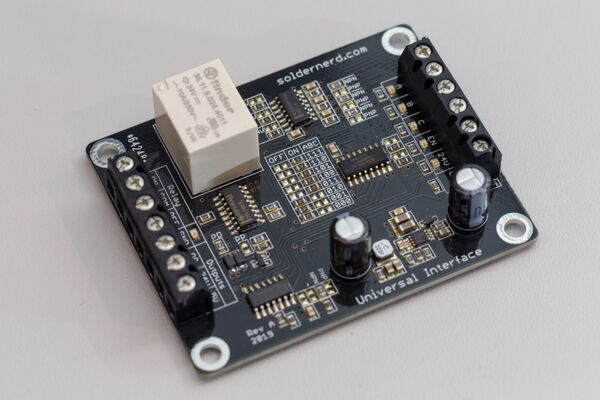
Universal Interface
"It’s time to present a relatively simple yet useful device: the Universal Interface. The need for this little helper arised when building the control for my CNC milling machine. But that’s a major project that I will introduce another time. Today it’s only about this little board. My challenge was that I had to connect to and from a variety of external devices. Such as coolant pumps, pneumatic valves, probes and the like." [...]
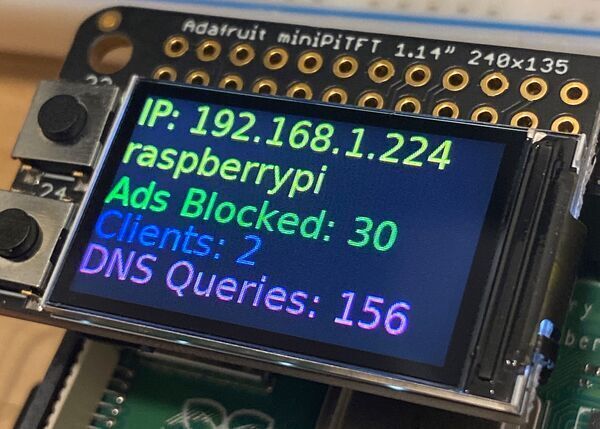
Pi Hole Ad Blocker with Pi Zero W
"Zap away ads using an ad-blocking custom DNS mini server A long time ago we made a Pi into a WiFi gateway that also blocked ads but the Pi Hole project does a way better job! This project will make your Pi Zero W act as a DNS (Domain Name Server) The kind of device that tells you that adafruit.com is known as IP address 104.20.38.240. Except Pi Hole DNS will do a special trick, when it is asked for the IP address of ads.adserver.com (for example) it will return nothing! So you will never even connect to the ad server and get the ad. Your connection will be faster, less data, and no intrusive ads. It works great on computers, tablets, phones, etc." [...]
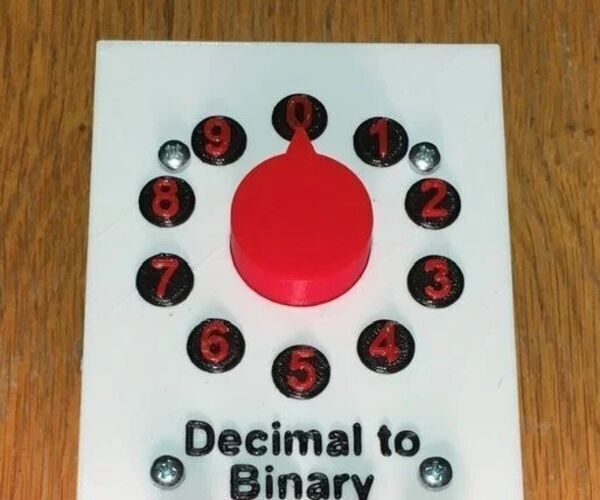
Mostly 3D Printed Binary Encoder
"An encoder converts information from one format or code to another. The device presented in this Instructable will convert the decimal numbers 0 through 9 into their binary equivalents. However, the concepts presented here can be used to create encoders for any reasonable number of items and codes (say 20 or less). Aside from a few easily obtained microswitches and screws, all of the parts for this mostly mechanical machine can be 3D printed. Why Am I Doing This? I recently came across a book published in 1968 entitled "How to Build a Working Digital Computer" by Edward Alcosser, James P. Phillips, and Allen M. Wolk." [...]
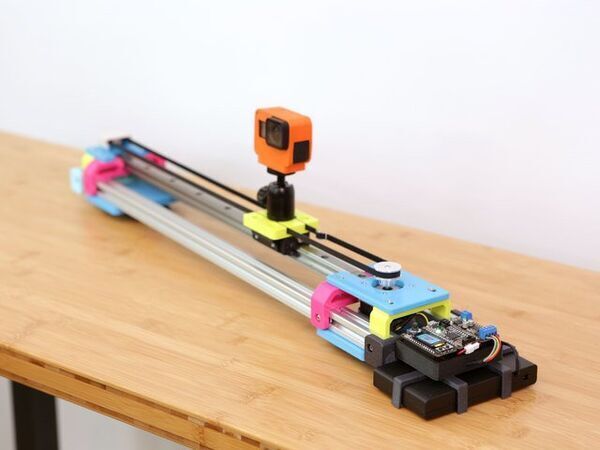
CircuitPython Motorized Camera Slider
"This project uses the Adafruit Feather platform and CircuitPython to make an easy to control motorized camera slider. The build uses aluminum extrusion to support a linear rail system with 3D printed parts. A camera can be mounted to the platform and slide along the rail. You may use the joystick and buttons to trigger different time settings presented on a mini TFT display. " [...]
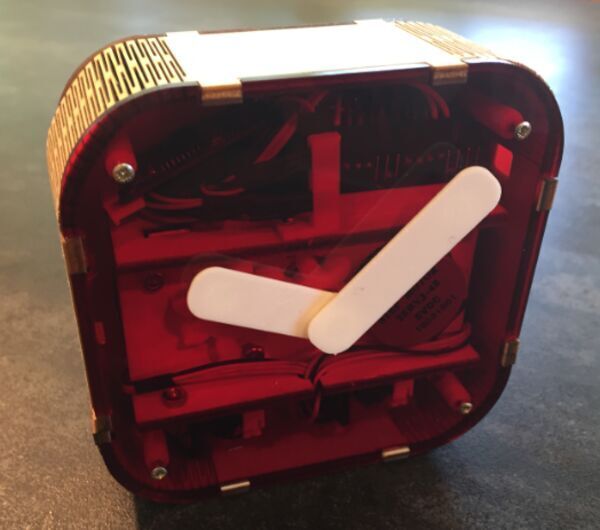
DIY Stepper Motor Clock with NXP LPC845-BRK
"This project is about building a stepper motor clock around the NXP LPC845-BRK board. The design is using a combination of 3D printed and laser cut parts and costs below $15. The GitHub repository (see links at the end of the article) includes an Excel file with the Bill-Of-Material (BOM). You need NXP MUCXpresso IDE (I have used the V11.0.0) NXP LPC845-BRK board 2 28BYJ-48 5V Stepper Motors with ULN2003 driver 2 Neodymium magnets (e.g. 5x2mm) Realtime clock with battery (DS3231) 2 Bearings 10x15x4mm 2 hall sensors (AH3572) Strand wires 12 M3 nuts and bolts 8 small (2×10 mm) wood Shrink-wrap tubing Soldering station and a few extra wires for power connection Plywood or PMMA/Acrylic material and access to a laser cutter Access to a 3D printer (I used an Ultimaker 2 with white PLA material) Optional: OpenSCAD to change the gears Optional: 3D modelling software to change the 3D models (I used 123Design from AutoDesc) Optional: wireless charging receiver module and charging station (see links at the end of the article for options) Concept The clock is designed around the very inexpensive 28BYJ-48 stepper motors (you can get 5 of them including the stepper motor driver board for less than $10). The idea is to use the two stepper motors to driver each clock hand using a simple gear." [...]
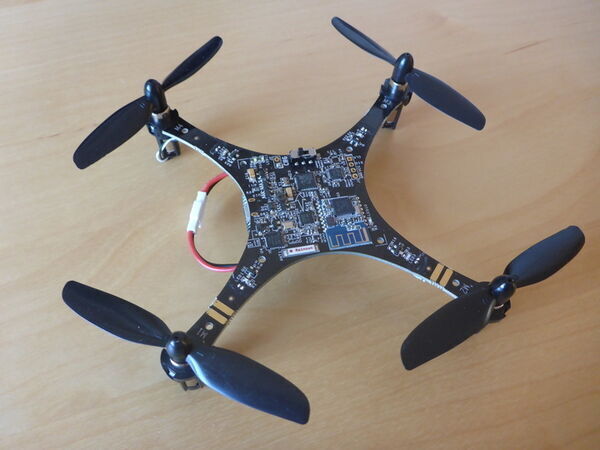
Bare Metal STM32 Programming and a Quadcopters Awakening
"Last year I got the Crazepony Mini quadcopter, and just recently I figured out how to program it. I will show my progress in this post, and it will also serve as a getting started guide for programming STM32 microcontrollers. We will build a minimal working example to blink an LED with only the GNU ARM compiler (gcc) and without any library dependencies. The Crazepony Mini # You can get the quadcopter on eBay for around 100 €. It ships with a remote control that wirelessly connects to the drone. Like the drone the remote control has no casing, which I find for the drone looks really good, but unfortunately makes holding the remote control difficult." [...]

CBM Tape Pi v1.6.1
"Use a Raspberry Pi as datassette drive with your Commodore 8-bit computer! Features Access Pi's SD card from your Commodore to: Load PRGs. Save PRGs. Traverse directories. List current directory's content. Delete files." [...]
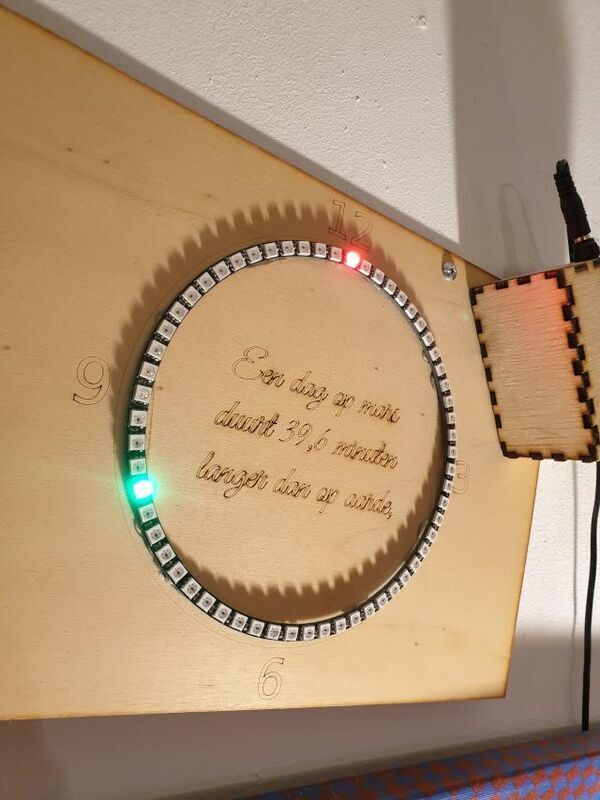
Mars clock
"As a time-enthousiast I wondered how time was kept on other planets, like Mars. Of course the citizens of Mars (none found at the time of this writing) did not decide on this themselves, but NASA did. I decided it would be cool to have a physical clock on the wall telling me the time on Mars, to get used to it in case I ever go there. There's software for it but nothing beats a circle on the wall with arrows indicating the current time coordinates. After pondering a bit I realised arrows would require a noisy mechanical construction and decided against this option. The circle stayed but instead I would use LEDs showing hours, minutes and seconds." [...]
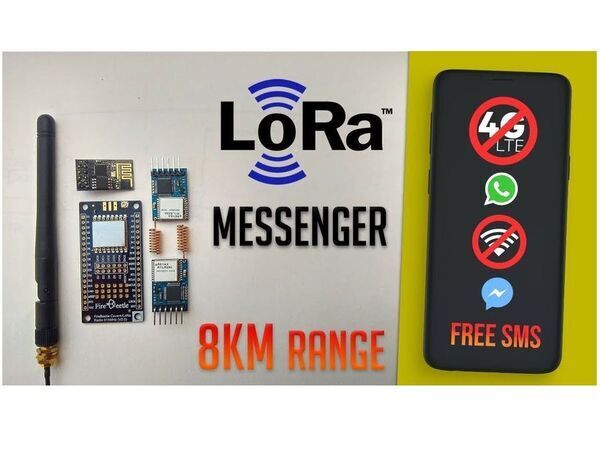
LoRa Messenger for Two Devices for Distances Up to 8km
"Connect the project to your laptop or phone and then chat between the devices without internet or SMS using just LoRa. Today we are going to make a project which can be connected to your smartphone or any computer and it makes that device LoRa-enabled messenger. Now when that will be done you would be able to message any other device using the same LoRa messenger. This all is done without presence of 4G/LTE/3G/GSM/WiFi/SMS. Step 1: Parts To make this you will need an ESP8266 board, I suggest to use a NodeMCU style board, I used Firebeetle board from DFRobot as it has on board battery charging and monitoring solution. For the LoRa purpose I used a RYLR896." [...]
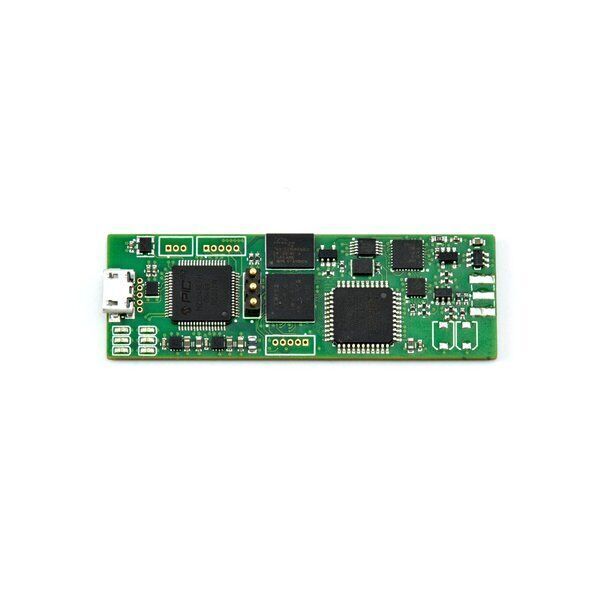
60MHz Bandwidth 250Msps Probe-Scope
"The Probe-Scope is an open source 60MHz 250Msps oscilloscope probe with all guts built right in, that plugs directly into your PC via USB The Probe-Scope is a 60MHz Bandwidth, 250Msps Open Source oscilloscope, in the form factor of a cable; imagine you cut the BNC end off an oscilloscope probe, and replaced it with a USB port, thats the Probe-Scope. The Probe-Scope grows as you grow, giving you as many channels as you have USB ports, the probe scope is almost infinitely expandable to tens (or more!) of channels. We are targeting a 100$ Price point, making it competitive with a Rigol 1054Z, and other low-cost oscilloscopes ($400 for 4 channels). " [...]
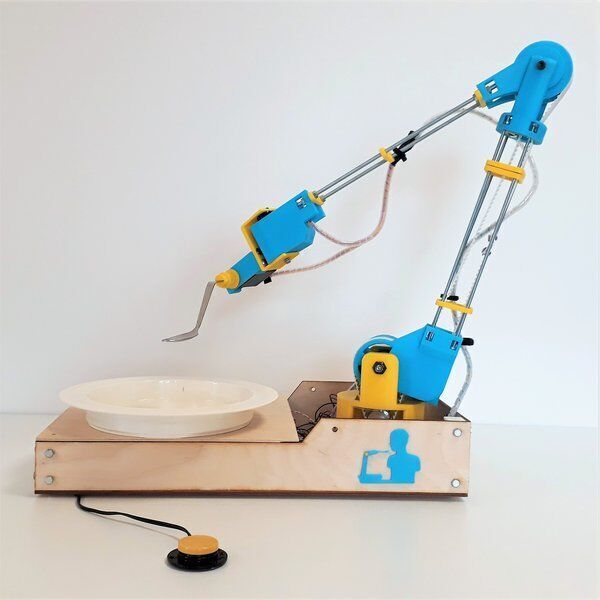
Open assistive robotic arm for meal
"An accessible Robotic arm made from 3D print and open electronic. Make it together It is not given to everyone to be able to use his arms. When that happens, having a meal could be a nightmare and making you depend on someone. Helping robotic's solutions exist on the market but cost several thousand dollars. Since october 2018 and a collaborative work at the Besanon's Hacking health, we believe that it is possible to realize a low cost open assistive robotic arm for meals, simple and accessible. We have designed prototypes made from 3D printed parts and open source electronic hardware which will facilitates reproductibility and access to hardware." [...]
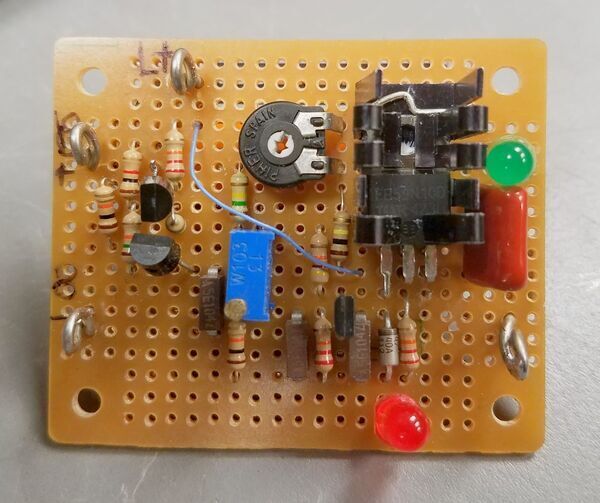
Automatically re-connecting low-voltage cut-outs for 12 and 24 volt lead acid battery systems
"In a previous post I described a simple circuit that provided a low-voltage cut-out that could be used in a battery-operated system - see the article "A latching low-voltage disconnect for 12 volt lead-acid and lithium batteries". That circuit - intended mostly for lithium-based batteries - required manual intervention to "reset" the device, intended for those situations where you wanted to provide manual intervention in resetting the circuit to prevent causing harm to the battery - and maybe the gear connected to it. This circuit is different from that described in the link above, intended for lead-acid battery based systems where an automatic reconnect of the battery is required when the battery voltage rises above a threshold voltage after application of charge current. An example of where this would be useful is a system in which the battery is charged by a main-powered DC supply that is used to keep the battery charged where the battery will power the load in the event of a power failure. Why would we worry about this? Related to this, let's briefly talk about maximizing longevity of lead-acid batteries: For best longevity, the shallower the discharge, the better." [...]

WiFi Christmas Tree
"In this slogan, we could summarize the project described in these pages, which like every year is on a Christmas theme but this year is something particularly technological: it is a Christmas tree in transparent plexiglass with luminous games and music that can be controlled by a smartphone. The electronics include four Neopixel LED strips controlled by the small Fishino Guppy board, equipped with Wi-Fi and therefore perfect for managing the luminous animations and the music of the tree using a smartphone. More precisely, the control is not direct but takes place via Telegram, the app for instant messaging that contends notoriety WhatsApp, but it offers, despite being less known by the general public, interesting Functions for bots: with a bot we command the Neopixel strips and the music of the luminous tree through the smartphone and in these pages we will explain how we will do it. Before proceeding we will focus on the choice of transparent plexiglass as a tree structure, which is not accidental but it derives from the ability that this material has, like glass, to be transversally crossed by light; this allows us to create a structure made up of two fir-shaped silhouettes to cross, along which four LED strips and transverse planes run, stuck perpendicular to the shapes and which will propagate the light that the Neopixel LEDs radiate from the inside. Everything rests on a 3D printed base with transparent PLA, which also acts as a container for electronics. THE ELECTRONICS The brain of the Wi-Fi Christmas tree is a Fishino Guppy board." [...]

Home Automation Using ESP8266 Wi-Fi Module Without Internet
"We are going to make a home automation using espmodule without internet. hello friends, in this tutorial, we are going to make a home automation using espmodule without internet. I hope lot of peoples used and heard about the home automation using bluetooth. as same like that, we are going to make a home automation using ESP8266 instead o bluetooth. " [...]
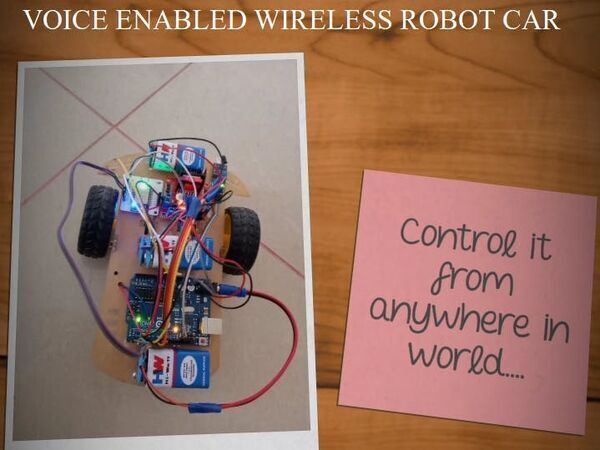
Voice Controlled Wireless ROBOT CAR
"Control this robot car from anywhere in world using internet via Google Assistant or Webapp Story As soon as I started learning from Bolt IOT course, my interest in IOT started developing rapidly. One day while surfing youtube, I saw a video on arduino board. I decided to explore more in IOT field using arduino. From there I decided to make a robot car using arduino. Stage One: Project Idea I was sitting and thinking that how to make my car more cool. Here comes idea in my mind that what if I do something and we can control this car wirelessly." [...]
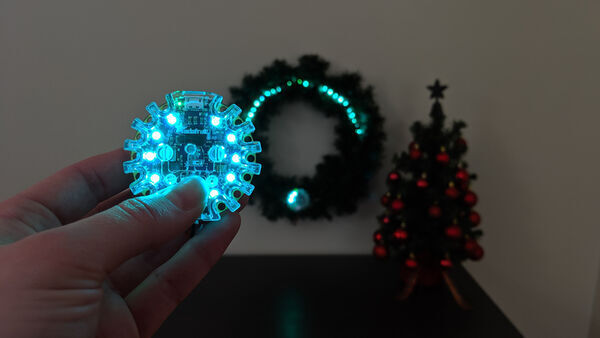
Circuit Playground Bluefruit NeoPixel Animation and Color Remote Control
"The Circuit Playground Bluefruit has all kinds of features built in, including NeoPixels, an accelerometer, two buttons, alligator-clip-friendly pads and Bluetooth Low Energy (BLE). This project uses these features to create a wireless NeoPixel animation and color remote control using CircuitPython. CircuitPython is a version of Python designed to run on microcontrollers like the Circuit Playground Bluefruit. You'll need two Circuit Playground Bluefruit (CPB) boards, an alligator-clip NeoPixel strip or two, and two batteries. You'll connect the NeoPixel strip(s) to the NeoPixel Animator CPB, and use the other as the Remote Control. This guide will show you how to connect everything up, and load the software onto the CPBs." [...]
That's all Folks!



